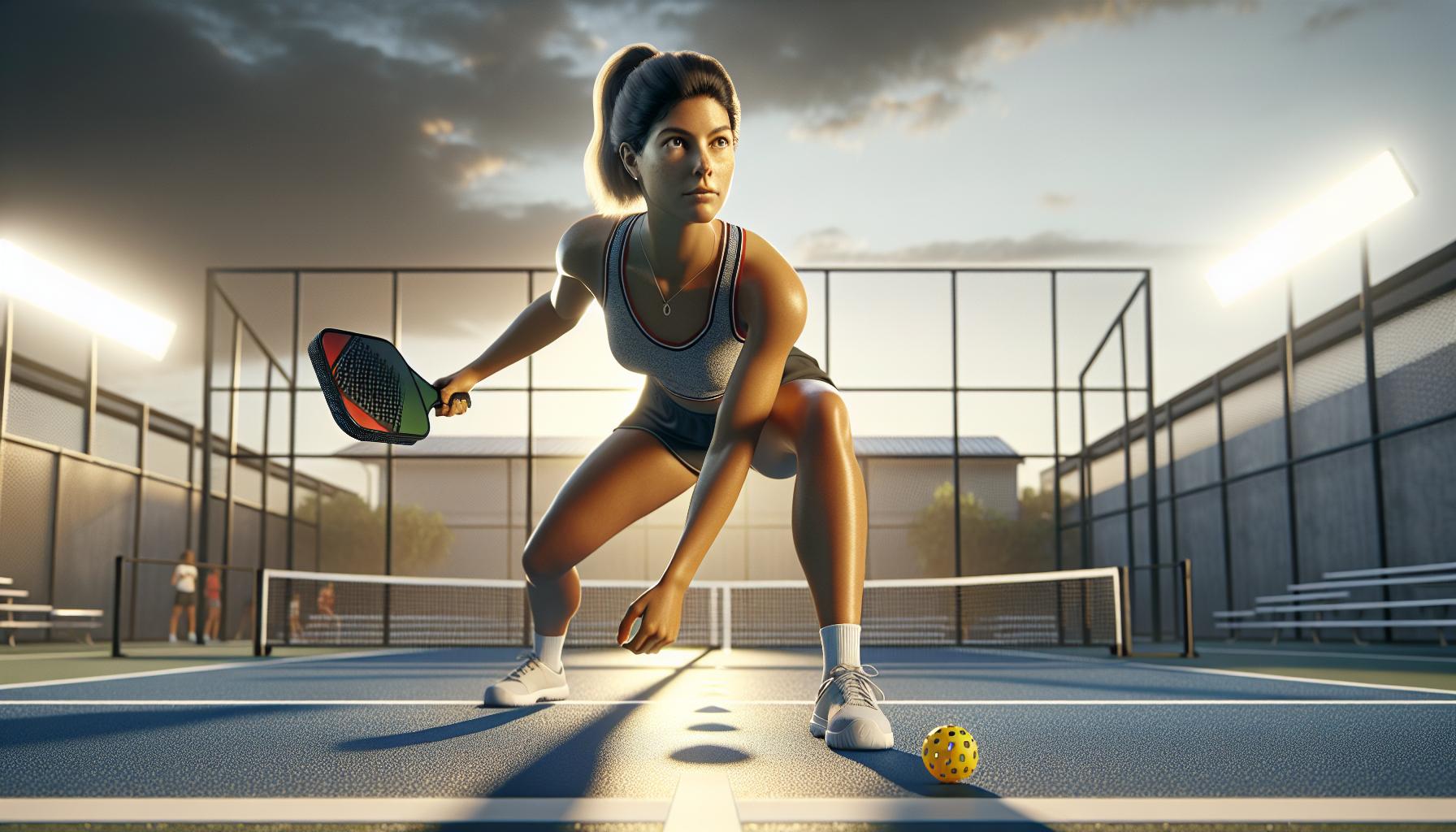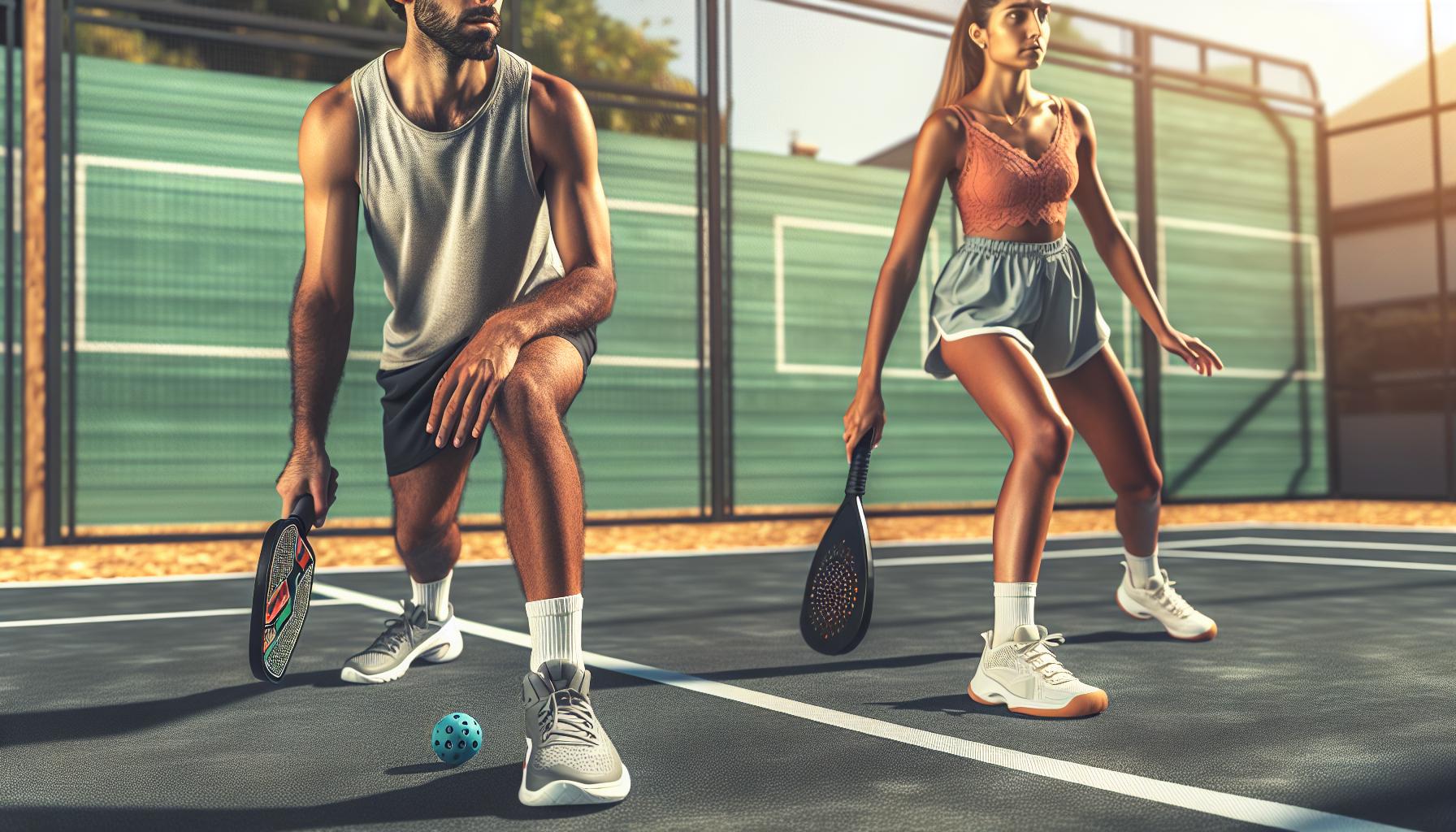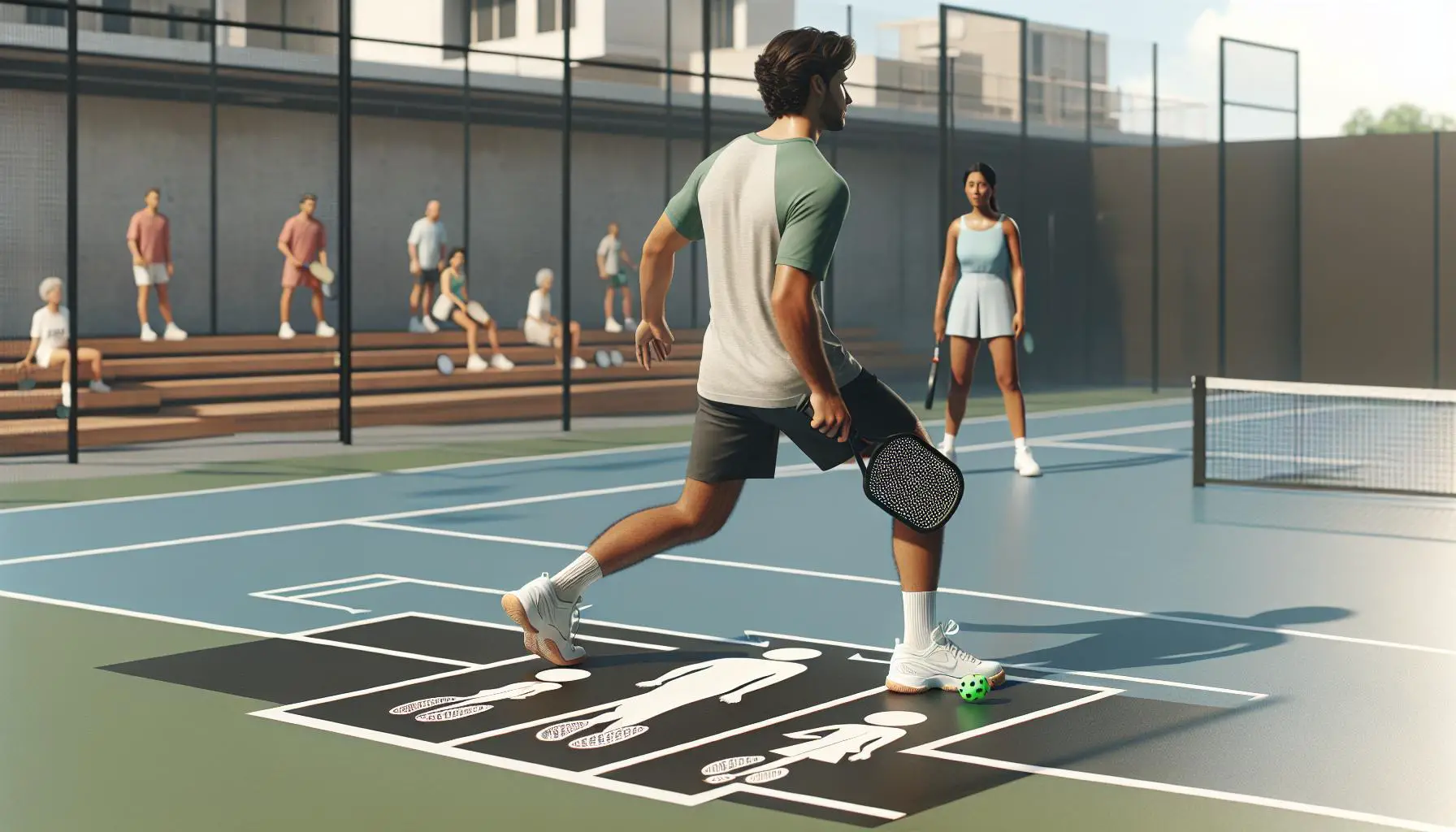Pickleball’s popularity is soaring, and with more people joining the game, understanding the nitty-gritty of its rules has become crucial. One rule that often trips players up, quite literally, is the foot fault. It’s a rule that’s easy to overlook but can significantly impact the game’s flow and fairness.
Foot faults in pickleball are akin to stepping over a line you’re not supposed to, affecting everything from serving to volleying. They might seem minor, but they’re a big deal in ensuring the game is played correctly and fairly. Let’s dive into what foot faults are, why they matter, and how you can avoid making them.
Understanding Foot Faults in Pickleball
In pickleball, a player commits a foot fault when they step on or over the designated lines of the court while serving or volleying. This rule is fundamental to maintaining fairness and integrity in the game. Foot faults in pickleball are similar to those in tennis but with some unique differences that players need to be aware of to avoid penalties.
The Serve
During a serve in pickleball, the server must keep both feet behind the baseline, without touching it, until the paddle strikes the ball. The importance of this rule cannot be overstated, as it ensures that the server does not gain an unfair advantage by starting closer to the net. If a foot fault occurs during the serve, it results in a fault, and the server loses their serve if it’s their second service attempt.
The Non-Volley Zone Rule
Another critical area where foot faults often occur is the non-volley zone, also known as the kitchen. This zone is seven feet from the net on both sides and is a critical area for strategic play. Players are not allowed to step into or on the non-volley zone line when executing a volley shot. The intention behind this rule is to prevent players from dominating the net, ensuring longer and more strategic rallies.
Common Mistakes and How to Avoid Them
Foot faults are among the most common mistakes in pickleball, particularly for beginners who may not yet be fully aware of the court’s spatial boundaries. Here are several tips to help avoid foot faults:
- Practice Serving with Proper Foot Placement: Regularly practice your serves, paying close attention to keeping your feet behind the baseline until after you’ve struck the ball.
- Stay Conscious of the Kitchen Line: When moving forward to volley, keep in mind the location of the non-volley zone line. Developing a spatial awareness of the line can help prevent unintentional foot faults.
- Use Drills to Improve Footwork: Drills that focus on footwork can significantly improve a player’s ability to navigate the court without committing foot faults.
The Impact of Foot Faults on Game Play
Committing a foot fault can disrupt the flow of a game and can be particularly detrimental during critical points. Players who consistently commit foot faults may find it challenging to maintain their rhythm and confidence during a match. Moreover, in competitive play, adherence to rules concerning foot faults is strictly monitored, and repeated infractions can lead to penalties or even disqualification.
Impact of Foot Faults on the Game

The ripple effects of foot faults in pickleball extend far beyond a simple point loss. These infractions can fundamentally alter the dynamics of a match, affecting both the players and the overall atmosphere of the game. When a player commits a foot fault, it doesn’t just signify a momentary lapse in concentration or technique; it underscores the importance of adhering to the rules for the sake of fair competition.
One of the most immediate impacts of a foot fault is the potential shift in momentum. In a closely contested match, even a single foot fault can change the course of the game, handing the advantage over to the opponent. This psychological aspect cannot be underestimated, as it can lead to frustration and a loss of focus for the infringing player, while providing a morale boost for their opponent.
| Consequence | Impact |
|---|---|
| Loss of serve | Immediate disadvantage, loss of scoring opportunity |
| Penalties or disqualification | In competitive play, repeated violations can lead to harsher penalties |
| Disruption of game flow | Frequent stops in play affect both players’ rhythm |
| Frustration and loss of focus | Affects mental state, leading to further errors |
Moreover, foot faults have a tangible effect on the strategy and tactics employed during a game. Players who frequently come close to committing foot faults may become overly cautious, affecting their serve’s power or accuracy and their movement around the court. This caution can make them less effective, especially in aggressive plays or when trying to reach a ball close to the non-volley zone.
Coaches and trainers often emphasize the prevention of foot faults through proper training and awareness. They incorporate drills that focus on footwork and serving techniques, ensuring players develop a natural and rule-compliant style of play. By doing so, they help minimize the chances of foot faults occurring, allowing players to concentrate fully on their game strategy without the added worry of unintentional rule violations.
Foot faults also serve as a learning opportunity, especially for new players. They underline the importance of precision, not just in where the ball lands but also in how players position themselves on the court. By understanding and avoiding foot faults, players can enhance their overall gameplay, focusing on strategic placements and power shots without the looming threat of penalties.
Common Scenarios of Foot Faults
Foot faults in pickleball don’t just randomly occur; they often happen in specific, recognizable scenarios. Gaining familiarity with these situations can help players avoid making the same mistakes. Here’s a breakdown of common instances where foot faults are most likely to happen.
Serving Faults
During the serve is one of the prime times foot faults are committed. The rules state that when serving, the player’s feet must not touch the baseline or the area outside the boundaries of the service box until after hitting the ball. It’s a delicate balance of power and precision, where the server needs to ensure they’re launching the ball from the correct position. Often, the eagerness to get an angled serve can lead players to step too early, committing a foot fault.
Kitchen Line Violations
The non-volley zone, popularly known as “the kitchen”, accounts for a significant number of foot faults. Players are not allowed to step into this area before or after volleying the ball. The kitchen rules are designed to prevent players from gaining an unfair advantage by volleying shots close to the net. It’s not uncommon to see players, especially beginners, get caught up in the heat of the moment and step into the kitchen unintentionally.
Kitchen Line Close Calls:
- A player’s momentum carrying them into the kitchen after a volley.
- Reaching over the kitchen line to play a shot without touching the ground in the zone. Though technically legal, it’s a fine line that often leads to faults.
Wrong Placement During Play
Doubles Specific: In doubles, the coordination between partners is crucial. Foot faults can occur if a player invades their partner’s service box or when there’s a mix-up in positioning during a serve. These faults highlight the importance of communication and spatial awareness among team members.
Boundary Violations
Players must also be cautious about the court boundaries during play. A foot fault is called if a player steps out of bounds while hitting the ball, affecting the point’s outcome. This type of fault usually happens during aggressive plays or when attempting to return difficult shots.
- Practice Serving: Regular practice focusing on serving technique and foot placement can reduce serve-related foot faults.
- Spatial Awareness: Being mindful of one’s position relative to the kitchen and boundaries can prevent common foot faults.
- Communication in Doubles: Effective communication with a partner helps in avoiding
Tips to Avoid Foot Faults

Avoiding foot faults in pickleball doesn’t just keep the game fair; it also elevates a player’s technique and understanding of the game. Here are essential strategies and practices that can help players steer clear of these common infractions.
Practice Proper Serving Techniques
One of the most frequent instances where foot faults occur is during the serve. Players should focus on honing their serving technique to ensure their feet stay behind the baseline until the ball is struck.
- Use visual markers: Place visual markers just behind the baseline during practice to create a physical reminder of where to stand.
- Serve drills: Regularly perform serving drills that emphasize foot positioning along with the serve’s accuracy and power.
- Review and adjust: Record serving practice sessions to review foot placement and make necessary adjustments.
Enhance Spatial Awareness
Another key to avoiding foot faults, particularly in the non-volley zone or the kitchen, is improving spatial awareness. Knowing where one is on the court relative to the lines at all times is crucial.
- Court walk-throughs: Before games, walk the court to familiarize oneself with the space and boundaries.
- Shadow play: Without the ball, go through the motions of playing to practice staying out of the kitchen or too close to the baseline.
- Use a buddy system: Practice with a partner who can call out when a foot fault is likely to occur, providing immediate feedback.
Effective Communication in Doubles Play
In doubles play, foot faults often occur due to miscommunication or a lack of coordination between partners. Practicing effective communication is key to reducing these errors.
- Designate roles: Clearly define who is responsible for shots in various areas of the court to minimize overlap and confusion.
- Verbal cues: Develop short, clear verbal cues to use during play that can help partners stay aware of each other’s positions.
- Practice positioning: Regularly practice with a doubles partner to improve positioning and coordination, reducing the chances of foot faults.
Additional Strategies
Implementing a few more strategies can further help players in their quest to mitigate foot faults.
- Slow down: Sometimes, simply slowing down and not rushing shots can help players maintain better control over their foot placement.
- Focus on balance: Work on drills that improve balance and agility. Better balance can help prevent unintended steps that lead to foot faults.
- Regular rule reviews: Occasionally revisiting the official pickleball rules can help
Conclusion
Mastering the art of avoiding foot faults in pickleball isn’t just about following rules—it’s about refining your game to its finest. By incorporating the tips shared, players can significantly improve their technique and understanding of the game. Whether it’s through practicing serves, enhancing spatial awareness, or communicating effectively in doubles, each strategy plays a crucial role. Remember, it’s the small adjustments that often lead to big improvements. So take your time, focus on balance, and keep those rules in mind. With dedication and practice, you’ll see those foot faults diminish and your enjoyment of the game soar.














0 Comments